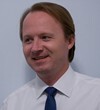As some of you may have noticed I have been absent for the past couple of weeks. Spring is typically one of the busiest times of year for most of us and I’m afraid my “day job” has taken precedence over my journalistic ambitions. However, field work means field stories and I suppose that’s why I was given this soapbox in the first place…
The first thing I learned about surveying was that you have to go where the dirt is. It’s no different with 3D imaging. It’s exceedingly rare when I get a project in my own backyard. More often than not, it involves a lot of airlines, rental cars, and the occasional Customs officer. Personally, I have no problem with this but it can take quite a toll on your equipment. With all of the traveling we have been doing lately it seemed like a good time to share some lessons I’ve learned about getting the gear where it needs to be.
- Prepare Your Gear.
- Get a great case. Just because your equipment came from the manufacturer in a case does not mean that there is not a better case available. I met the founder of Pelican Cases at a show way back in the early ’90s. I should have just given him my wallet back then.
- Get Shock monitors. Places like ULINE carry Shockwatch labels that turn colors if the gear absorbs to great of a shock. Put them on the outside of the case to put shippers on notice and on the scanhead to see if anything actually got to the important parts.
- Make a packing list. It seems silly that I have to say it, but things get left behind all of the time. After the job is complete, I’m rarely thinking clearly enough to do much more than follow a checklist anyway.
- Choose your Shipping Method Wisely.
- Most of us immediately jump to FedEx or UPS due to the “door to door with a signature” nature of their services. However, a lot of our gear is heavy and as a result shipping this way can get expensive.
- Look into air cargo. Several airlines offer methods to become a certified shipper using their air cargo service. I’ve found these to have two main advantages. Getting on the next flight is usually more than FedEx, but I can have gear moved between our Houston and Nashville offices in under four hours. If you have more time, it is less expensive than FedEx or UPS. The downside is that you have to pick up at the Air Cargo desk as door-to-door options are not available with most airlines.
- Consider checked baggage as an option. If you are flying to the job you may be able to check the gear as luggage. It will cost you a lot in oversize/over weight/excess baggage fees, but they can still be less than shipping it. I flew to Australia this month and checked four pieces of gear. All of the fees added up to about $500 each way. Shipping the C10 alone via DHL or FedEx was $600 each way.
- If Traveling Internationally Use a Carnet.
- Don’t feel bad if you’re not familiar with a Carnet, neither are 1/2 of the Custom agents. Essentially it is a document that lists all of the equipment that you are leaving the country with and states that you will return with all of the same equipment by a specific date. It will cost you a few hundred dollars (price is dependent upon the stated value of the equipment listed on the Carnet) but it saves you from potentially being liable for a VAT or 10% or so on the value of your equipment. In the US, these can be obtained through the US Council for International Business (USCIB) and is good for passage into the EU and most countries that see the type of work we do. What this does to your experience in customs seems to be a mystery of the highest order. I’ve handed it to an agent that literally stamped it and helped me carry my gear past the other passengers to the exit and I’ve had them take 30 minutes to find someone who knew how to stamp the document. Then again, Customs has always been a bit of a mystery to me anyway.
- Consider Local Sourcing.
- There are 3D imaging service providers, retailers and equipment rental houses all over the world. Sometimes not shipping your gear is the most cost-effective solution of all.






